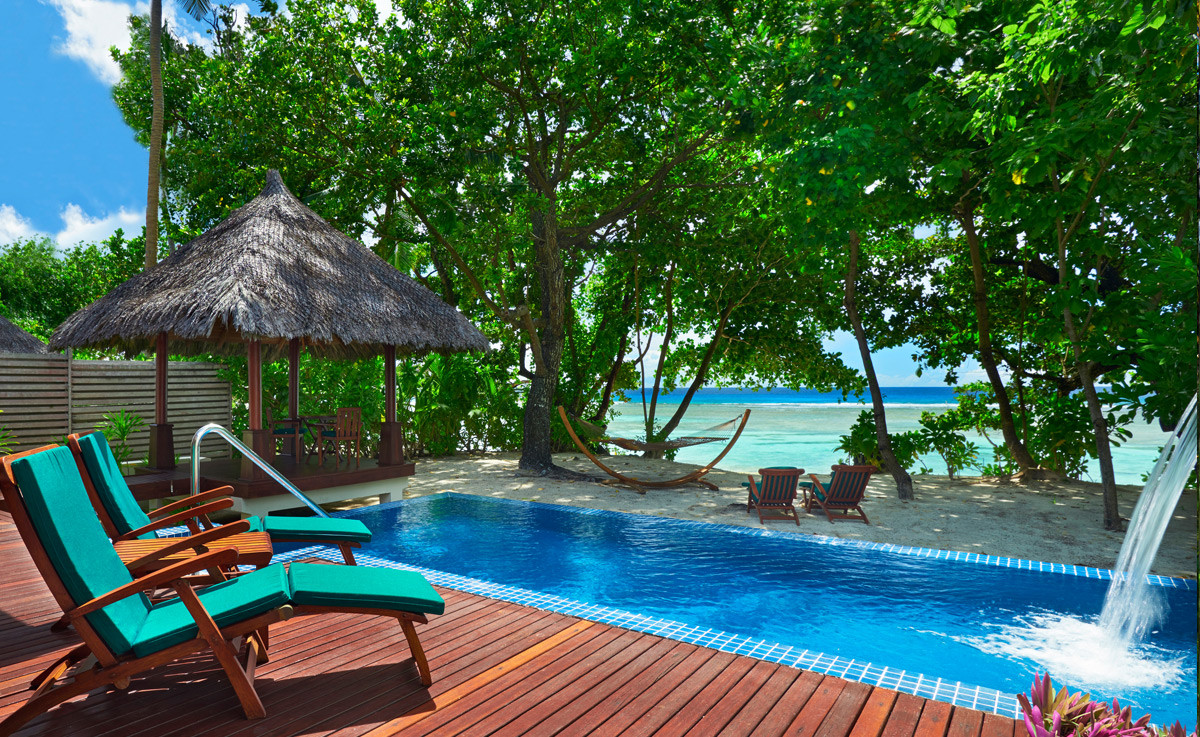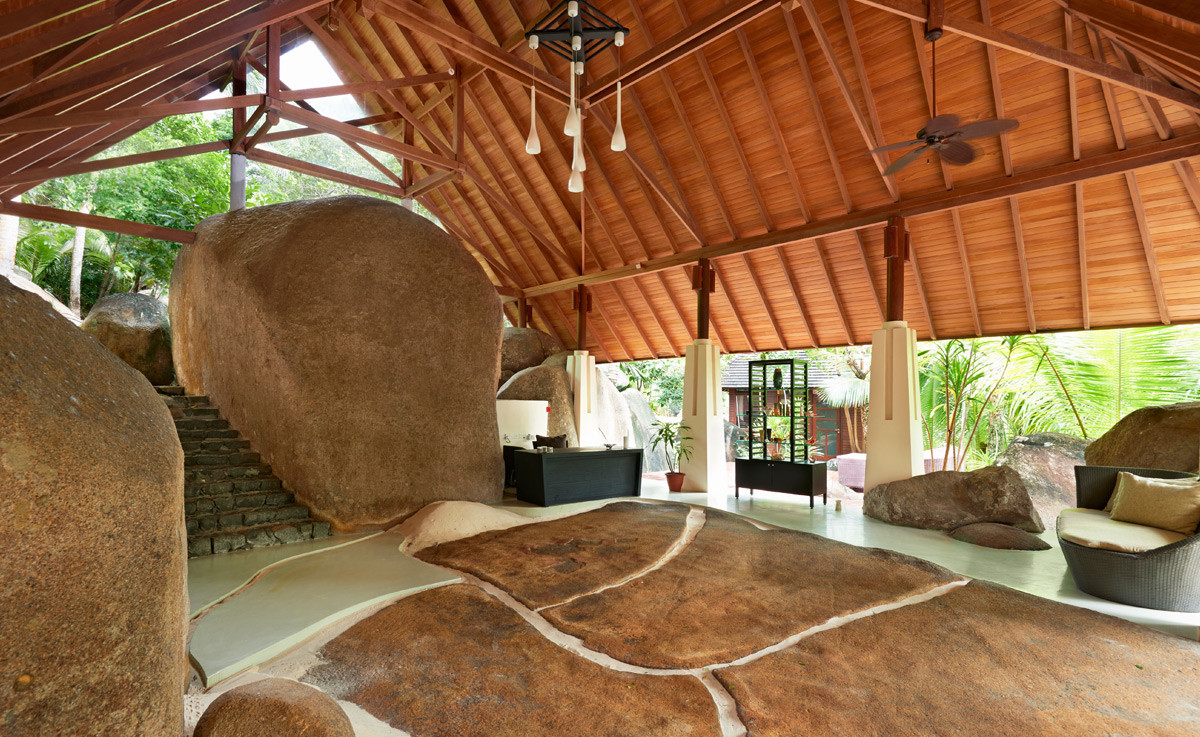We walked through narrow passageways, barely two arms wide, with monolithic granite boulders on either side, watching the tidal flow of the surf that would soon meander through this stone forest. Finding our way to the end, beyond us lay an infinite stretch of white sand, with a dense cluster of palm trees on one side, and on the other, turquoise waters with foaming surf ebbing on the coral reef. It was early morning on the first leg of our honeymoon.
Rerouted due to the terrorist attack at Istanbul’s Ataturk Airport, my husband and I arrived safely halfway around the globe on the seemingly deserted beaches of Silhouette Island, the third largest of some 115 islands (the majority uninhabited) that make up the Republic of Seychelles, one of the smallest African nations.
Days earlier we’d flown into Nairobi then some 1500 kilometers off the east coast of Kenya into the Indian Ocean to reach the extended cluster of granite, coral and sand-based islands, practically in the midst of nowhere. We landed on Mahe, the largest of the island group, with its quaint capital city of Victoria.
Unlike many island countries on this globe, The Seychelles were uninhabited throughout most of recorded history. But with a prime location in the middle of the Indian Ocean, the archipelago became an explorer’s haven, especially during the early 17th century when the Old World countries were vying for the lucrative spice trading routes to Asia. The earliest recorded landing was in January 1609, when a British East India Company ship explored the islands. The Seychelles quickly became known as a transit point for trade between Africa and Asia and also a targeted region for pirates, until the French gained control in the mid-1750s. The islands remained a battle toss between the French and British, with the British gaining control in 1810. The Seychelles were granted sovereignty as a crown colony in 1903 and independence as a Republic in the Commonwealth in 1976.
Many of the Seychelle islands are designated as nature reserves,
With no indigenous people, the islands’ population is a melting pot descended from the French and British settlers as well as immigrants from along the various Asian trade routes (from India to China), former enslaved Africans (the British prohibited slavery in 1835) and workers finding freedom. This fusion of peoples and traditions has resulted in a multiracial Seychellois Creole culture that is evident in island menus, incorporating various aspects of French, Chinese, Indian and African cuisines.

Many of the Seychelle islands are designated as nature reserves, with strong regulations protecting flora and fauna. Like many fragile island ecosystems, the Seychelles suffered a loss of biodiversity when humans first settled, however extinctions were far fewer than in other island regions such as Hawaii, Mauritius and Australia. The Seychelles are still home to some 150 endemic species of plants, flowers and ocean life, many unique to the islands. The Seychelles also host some of the largest seabird colonies in the world as well as the largest remaining populations of the Aldabra giant tortoise.
Heading towards the north-west coast, winding up the narrow mountain roadways, we came to the sandy stretch of Beau Vallon, considered the best beach on the island for swimming, diving and snorkelling, due to its clear waters and protected coral reefs. At one end of the beach lies The Hilton Seychelles Northolme Resort & Spa, a spectacular collection of hillside and waterfront villas offering panoramic views of the ocean. From the open-air lobby, I was in complete awe of the infinity pool with its breathtaking views of Beau Vallon Bay and the tropical mountain coastline to the south.

Our luxurious villa, designed in modern plantation style and set upon stilts above the lapping waves, had a spacious terrace, perfect for the unforgettable sea views and spectacular sunsets. Plush oversized sofas accented with tropical colours complemented the wooden floors and walls. The resort’s intimate Eforiea Spa is housed in a separate villa on the water’s edge, its three luxurious treatment rooms each with incredible ocean views.

Panoramic island views and authentic Seychellois Creole flavours are hallmarks found throughout the islands. The Northolme’s Hilltop Restaurant offers breathtaking views at breakfast and in the evening the alfresco Les Cocotiers is the perfect setting for dining under the stars with the moonlit surf glowing below.

Our signature starter was a delicate fillet of red mullet, seared and crusted with sesame seeds, set over a bed of soba noodles swimming in miso broth, garnished with pickled daikon, wasabi cream and nori. Sweet, pan-seared scallops were paired with local black pudding, Parma ham and Creole sauce. Jobfish, a species of snapper native to the warmer Indian and South Pacific Oceans, was buttery and succulent, with an aromatic coriander crust adorned with a curried seafood broth, mussels, roasted fennel and papaya chutney.
Nestled in lush mountain jungle terrain and with a spectacular talcum beachfront, it is one of the most romantic and secluded havens I have experienced.
The Seychelles Hilton properties have a private boat launch, from where sailed some 20 kilometers to Silhouette Island, third largest of the archipelago, and to the sole resort on this unique piece of tropical paradise, The Hilton Seychelles Labriz Resort & Spa. Nestled in lush mountain jungle terrain and with a spectacular talcum beachfront, it is one of the most romantic and secluded havens I have experienced.

Although the island was first explored in the early 17th century, it wasn’t until the mid-19th century that the French-born Dauban family established the settlement of La Passe and developed plantations on the island. The private island was home to the family until 1960, when it was sold to a French company and in turn became public a domain in 1983 when the Seychelles government purchased it and declared most of the island and surrounding waters a National Marine Park.
Although our villa had an inviting soaking pool and spacious terrace, we spent most of our time on the beach (with our own hammock!), in the surf and exploring the stunning beaches. Although there are over 100 villas on the property, the beautiful beach felt surprisingly isolated as we walked along it. It was here — splashing through the surf — we came across the mammoth granite boulders that are ubiquitous throughout the islands.
These remarkable stones make a beautiful natural setting for the resort’s wilderness spa. Individual treatment bungalows are built around the existing landscape with little development, due mainly to the government’s strict environmental regulations. The spa treatments are both relaxing and meditative as the private suites are embedded in the tranquility of the island’s tropical jungle landscape.

This sprawling resort boasts seven restaurants and bars, many surrounding the vast infinity pool. The standout is the restored plantation home of the Dauban family, showcasing modern and traditional Seychellois cuisine in an intimate old-world setting. The menu emphasizes locally sourced ingredients, from seafood caught daily by local villagers to homegrown fruits and greens from the resort’s organic garden.
Tender cubes of blue marlin and pineapple were infused in a mildly spiced chili and lime ceviche. Locally harvested escargot came braised with house-made Creole sausage. A regional specialty of octopus in a Seychellois curry was heady with masala spices, hot chilies and fragrant fresh coconut milk.
Surrounding Silhouette Island are well-preserved coral reefs with a wonderful array of ocean life. Even though we visited during the cooler months, the water was still inviting and we explored the fantastic world below the surface. But our most memorable experiences were the various trails that took us up the verdant mountainsides into the natural tranquility of these secluded islands. Some half a globe away from our home, we experienced the Seychelles like the early settlers who descended upon these isolated islands and discovered their unspoiled beauty.



